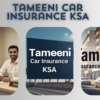Introduction to The Line Saudi Arabia
A Revolutionary Concept in Urban Development
The world is facing rapid urbanization and environmental challenges, which is why The Line Saudi Arabia offers a potential solution. On jilicitycityjili.com, we’ll explore how this futuristic city aims to tackle issues like congestion, sustainability, and urban sprawl.
By integrating cutting-edge technology and eco-friendly living, The Line promises a more sustainable and efficient way of life. In this article, we’ll discuss how this revolutionary project could change the way we think about cities and the environment.
Why The Line is Making Headlines Globally
The project has captured worldwide attention due to its bold design and revolutionary infrastructure, including 100% renewable energy and vertical living spaces.
What This Article Covers
This article explores The Line’s design, technology, sustainability, economic impact, and comparisons with other futuristic cities like Dubai and Singapore.
Understanding The Line: A City Like No Other

The Line: A City Like No Other
What is The Line Saudi Arabia?
The Line is a 170-km-long linear city designed to accommodate 9 million residents without cars, roads, or carbon emissions. It aims to create an advanced, eco-friendly living environment using AI and renewable energy sources.
The Master Plan Behind This Bold Project
NEOM’s master plan includes smart infrastructure, vertical gardens, and AI-powered services to ensure sustainability and technological advancement.
Who is Leading the Project? Key People and Organizations
The Line is a key component of Saudi Arabia’s Vision 2030,(jilicitycityjili.com) spearheaded by Crown Prince Mohammed bin Salman and supported by top architects and technology firms.
The Inspiration Behind The Line: Why Saudi Arabia?
The Role of NEOM in Saudi Arabia’s Vision 2030
NEOM aims to diversify Saudi Arabia’s economy and establish itself as a global leader in innovation, sustainability, and tourism.
How Saudi Arabia is Redefining Smart Cities
With The Line, Saudi Arabia is pushing the boundaries of AI integration, green energy, and urban planning.
A Look at Other Futuristic Projects in the Region
Other major projects in the region include Dubai’s Smart City Vision, the Louvre Abu Dhabi, and the Kuwait Towers.
What Makes The Line Unique?
100% Renewable Energy: How The Line is Going Green
The Line will be fully powered by solar and wind energy, ensuring a zero-carbon footprint.
No Cars, No Roads, No Emissions – A City Unlike Any Other
This city will be entirely walkable, relying on autonomous transport systems.
AI-Driven Urban Planning: The Role of Technology
AI and IoT will be used for traffic management, healthcare, and security.
Self-Sustaining Ecosystem: How The Line Will Operate
The Line will feature vertical farming, desalination plants, and automated waste management.
The Core Features of The Line Saudi Arabia

Core Features of The Line Saudi Arabia
Smart Infrastructure: A City Built for the Future
- Autonomous Public Transport & Hyperloop System
- Vertical Living: High-rise buildings with integrated smart homes
- AI & IoT Integration in Daily Life
Environmental Sustainability: A Model for Green Cities
- Zero Carbon Footprint Goals
- Renewable Energy: Solar and wind power usage
- Water Conservation: Advanced desalination and recycling systems
Digital and Smart Technology
- AI-Managed Services for healthcare, security, and transport
- VR & AR for urban planning and tourism
- 5G & Beyond: Ultra-fast connectivity for residents
How The Line Affects Daily Life
- Work & Residential Spaces: AI-driven workspaces
- Education & Healthcare: AI-powered medical services
- Entertainment & Leisure: Cultural hubs, shopping centers, and sports facilities
The Line vs. Other Futuristic Cities
- Dubai’s Smart City Vision vs. The Line
- Singapore’s Urban Planning vs. The Line
- Lessons The Line can learn from global smart city projects
Challenges Facing The Line Project
Technological & Engineering Barriers
- Extreme desert conditions pose a challenge
- Scaling AI and smart city technology effectively
Financial & Economic Challenges
- High construction and operational costs
- Return on Investment (ROI) concerns
Social & Cultural Adjustments
- Will people adapt to vertical, car-free living?
- Integration with Saudi Arabia’s cultural identity
The Economic and Business Impact of The Line
- Boosting Saudi Arabia’s economy
- Opportunities for tech startups
- Real estate and foreign investments
The Timeline for The Line Saudi Arabia

Timeline for The Line Saudi Arabia
- Key construction phases
- Expected completion date
- Vision for 2050 and beyond
How Can You Get Involved with The Line?
- Job opportunities in The Line
- Investment potential
- How to visit or learn more
Final Thoughts: Is The Line the Future of Urban Living?
- The Line is more than a city – it’s a movement.
- A model for future smart cities worldwide.
- Will The Line succeed? The world is watching.
Bonus Section: Additional Resources for Readers
- Videos & Documentaries on The Line
- Official NEOM website
- More insights on jilicitycityjili.com
Conclusion
The Line Saudi Arabia is an unparalleled futuristic project that could revolutionize urban living. With its commitment to sustainability, AI, and smart city technology, it stands as a beacon for the future of urban development.
Stay tuned for more updates on The Line at jilicitycityjili.com!
FAQs
What is The Line Saudi Arabia?
The Line is a 170-km-long smart city designed as part of NEOM. It will accommodate 9 million residents, operate without cars or roads, and run on 100% renewable energy, making it one of the most sustainable urban projects in history.
How will The Line be powered?
The city will be fully powered by renewable energy sources, including solar and wind. (jilicitycityjili.com) This ensures zero carbon emissions while maintaining an eco-friendly and self-sustaining urban environment.
What makes The Line different from other futuristic cities?
Unlike cities like Dubai or Singapore, The Line is designed without cars, roads, or emissions. It features vertical living, AI-driven urban planning, and smart infrastructure to optimize daily life and environmental sustainability.
When will The Line be completed?
Construction has already begun, with various phases expected to be completed by 2030. The full vision of The Line, including advanced AI integration and a fully operational smart ecosystem, aims to be realized by 2050.
How can people get involved in The Line?
Opportunities include investments in NEOM, job openings in tech and construction, and potential residency for professionals in various industries. More details can be found on the official NEOM website.










Add comment